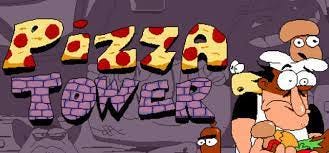I’ve been playing a bunch of Pizza Tower lately and have been impressed at the game’s ability to coax me into chasing higher ranks rather than leaving the showboating to the pros.
I love the spectacle of speedrunning in games like Sonic The Hedgehog and am glad that people enjoy chasing incredible combo-chasing runs in games like Bayonetta and Devil May Cry. But I do not usually partake. I’m pretty satisfied with beating games like this ‘casually’, rarely do I go back through them to completely master these games inside and out.
So what is so special about Pizza Tower? I have some theories.
First of all, imagine speedrunning a game like Sonic The Hedgehog. Doing so carries a significant layer of additional risk. Sonic is a fragile character who cannot take two hits in succession without grabbing rings to protect his life. In addition, the level design contains any number of insta-kill bottomless pits and crushing traps. Taking the faster routes in levels also requires precision timing and will often drop the player to a much slower route after one failed attempt.
Contrast with Pizza Tower. Peppino Spaghetti is invincible. Even if an enemy or hazard gets a hit on the player, the setback is minor. The player experiences a break in their rhythm and a minor delay, but then can get back on track. Even the combo meter doesn’t reset on a hit. As long as the player can restore momentum quickly, all they lose is a few seconds. Even then, the game isn’t strictly concerned with overall speed until the “Pizza Time!” pursuit sections start at the end of the level. Simply put, there is rarely a huge risk in blasting through levels as quickly as you can.
It also helps that much of the level design in the game is designed to be more fun (and sometimes) mandatory at high speed. Peppino simply cannot access much of his move set without sprinting at high speeds. Wall running, jumping, and breaking all require high speed, and enemies usually enter a “fear” state when approached by a high-speed Peppino, making them easier to kill. Any time spent at pedestrian walking speed in this game just feels like the more cumbersome way to play the game, and all it takes to press down on the run button to get back to fun mode.
Simply giving in to the temptation to have more fun with the game and a little bit of exploration of each relatively small level can get the player comfortably earning A-rank scores without needing to drive for perfection. The player will naturally execute the kind of speed and combo-focused play style in their “casual” runs because it’s simply less fun and more effort to resist it.
Sonic The Hedgehog is actually still quite a lot of fun to play slowly, and many levels seem actively resistant to going fast (try and blitz through Marble Zone!) but Pizza Tower teaches you all of the techniques you need to chase for the more difficult S and P rank scores. You’re already familiar with all of the advanced movement techniques, from there it’s just executing them with confidence and serial precision. It does not require a fundamental shift in playstyle.
In summary, what makes Pizza Tower succeed is the following:
Minor punishments for failure
A casual playstyle that encourages advanced techniques as standard
Positive feedback for taking risks, to the point where it feels riskier to play it safe!
A lot of what makes this alchemy work is in the core movement design, but on the metagame side, it’s also worth mentioning that the scoring system in Pizza Tower doesn’t disproportionately incentivise perfectionist play. A few quite good combos don’t appear to be vastly outstripped by one single unbroken combo. Rewarding a player for a “quite good” performance better incentivises them to iron out the creases and push for an “excellent” run.
If you’ve tried Pizza Tower yourself, please let me know how you found it and I’ll see you all next time.



